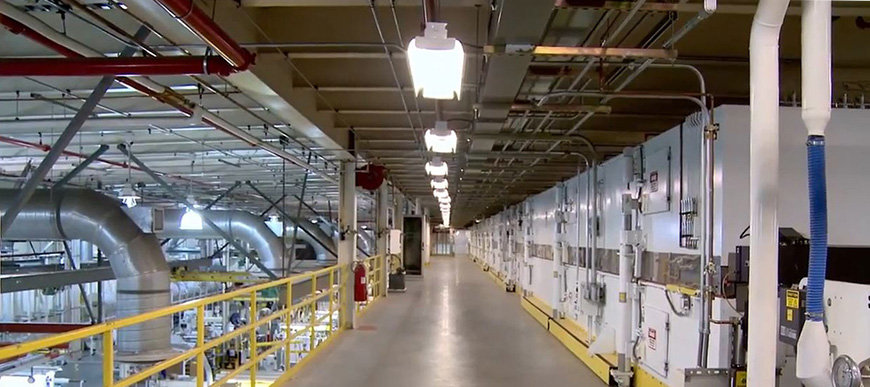
PFAS are present in many consumer products. The number and variety of PFAS sources present considerable challenges for cleanup efforts and prevention measures. The major sources of PFAS contamination in drinking water, groundwater, soils, and air include:
- Fire training/fire response sites
- Industrial sites
- Landfills
- Wastewater treatment plants and resulting biosolids
Fire training/fire response sites
Aqueous film-forming foams (AFFFs) have been used for many years by the U.S. military, civilian airports, and other facilities to extinguish flammable liquid fires such as gasoline or jet fuel. Fire-training areas are known to have PFAS releases, but many other sites are also likely affected by AFFF due to past emergency response incidents and the discharge of AFFF-containing fire suppression systems within large aircraft hangars and buildings. Accidental releases of AFFF from storage tanks, railcars, and piping during delivery or transfer impact additional sites. Once released to the environment, AFFF can contaminate soil, surface water, and groundwater.
Industrial sites
Utah does not have any known manufacturers of PFAS. Potential industrial sources include manufacturing facilities where PFAS-containing products are made, chemical feedstocks containing PFAS are used, or PFAS are used as processing aids in fluoropolymer production. Secondary manufacturing facilities may use these products or feedstocks as part of industrial processes such as the coating application to finish products.
Facilities that may be sources of PFAS releases to the environment include textile and leather processors, paper mills, metal finishers, wire manufacturers, plating facilities, aviation manufacturers, as well as facilities using surfactants, resins, molds, plastics, and semiconductors. Industrial facilities may release PFAS to the environment via wastewater discharges, onsite and offsite disposal of wastes, accidental releases such as leaks and spills, and stack emissions.
Landfills
Landfills are potential sources of PFAS because they are the final repositories not only for PFAS-contaminated industrial waste, sewage sludge, and waste from site mitigation but also for PFAS-bearing consumer goods such as those treated with stain-resistant coatings. Consumer products landfilled since the 1950s are potential sources of PFAS to the environment.
Industrial waste can be a significant source of PFAS in landfills, particularly those that accept waste from the production or application of PFAS. In addition, many landfills accept sewage sludge from wastewater treatment facilities that may contain PFAS.
Wastewater Treatment Plants (WWTPs)
Municipal and industrial WWTPs can introduce PFAS into the environment from discharges of treated effluent, leakage, unintended releases from surface impoundments, air emissions, or disposal of biosolids and other byproducts generated during the treatment process.
Most or all of the wastewater received by municipal WWTPs is contaminated by PFAS from consumer products and (potentially) industrial sources. Conventional treatment processes are ineffective for PFAS. As a result, PFAS may be present in solid waste (such as sewage sludge) that may ultimately contaminate groundwater, surface water, or both. PFAS may also be introduced to the environment through the land application of biosolids as a beneficial soil amendment, potentially allowing PFAS to contaminate crops or livestock, surface water through runoff, or infiltrate to groundwater.
